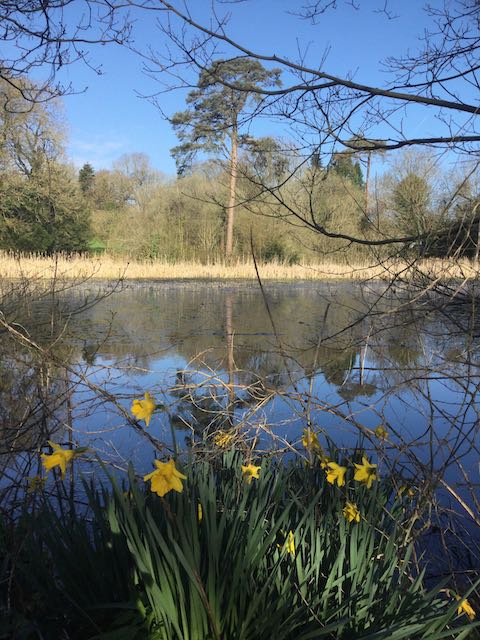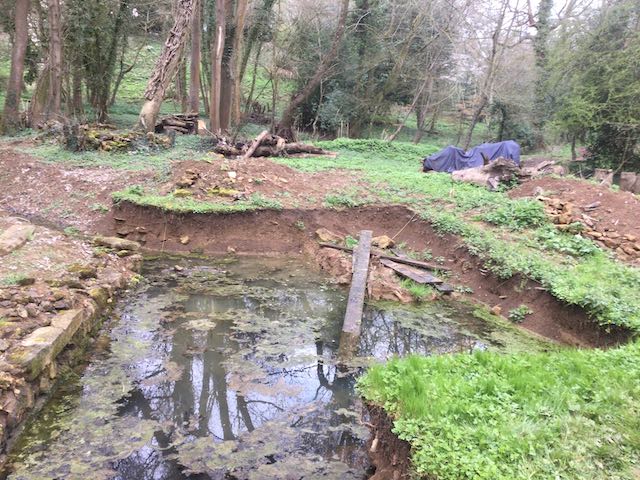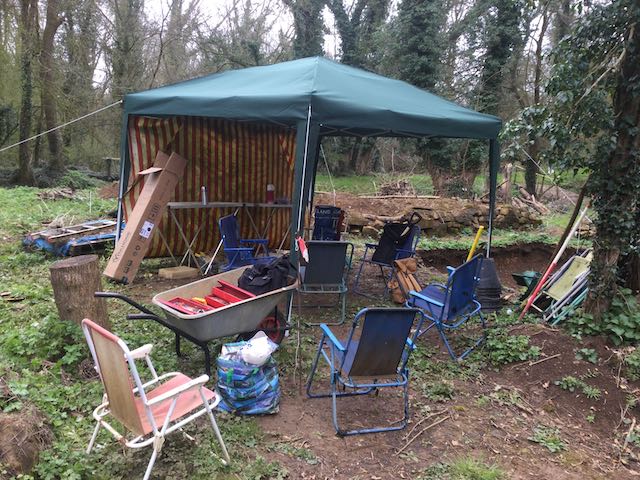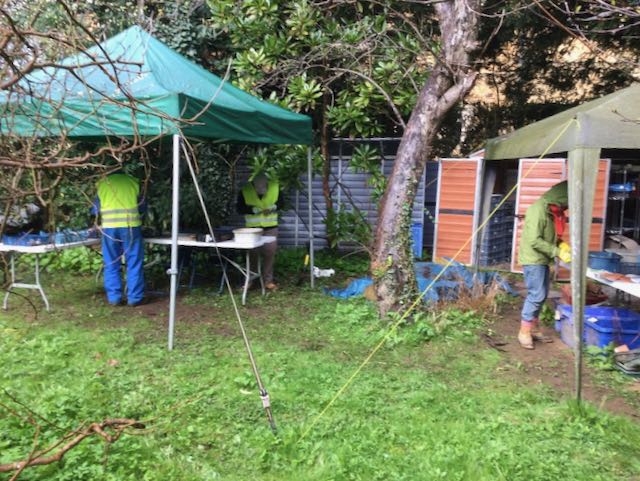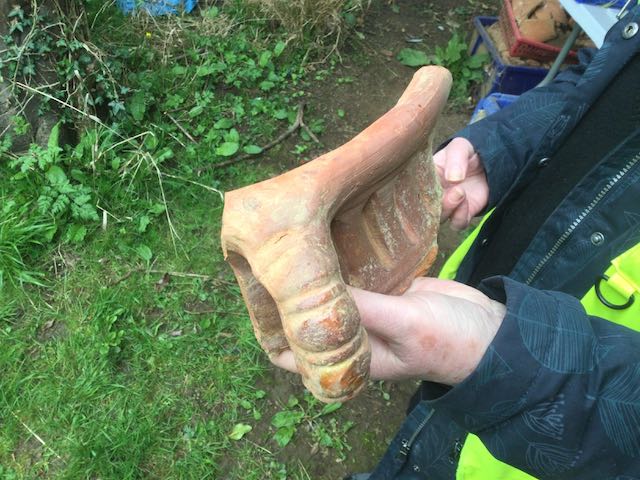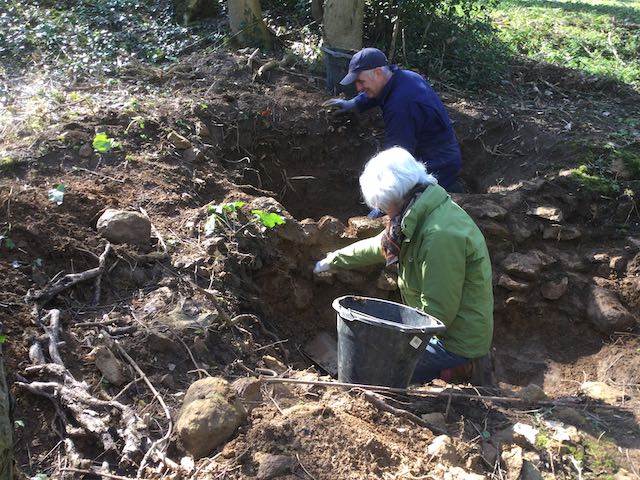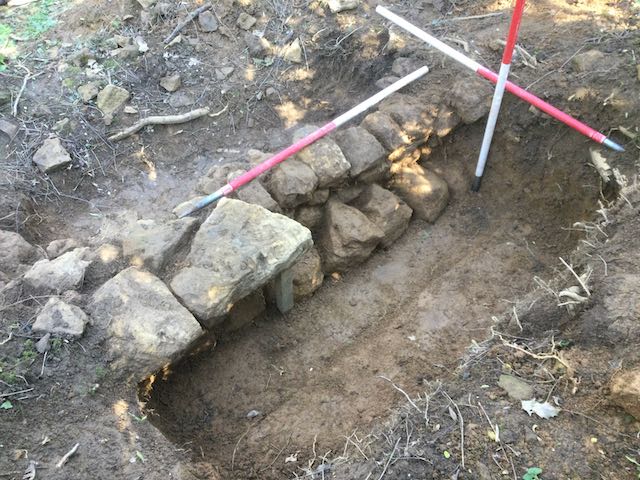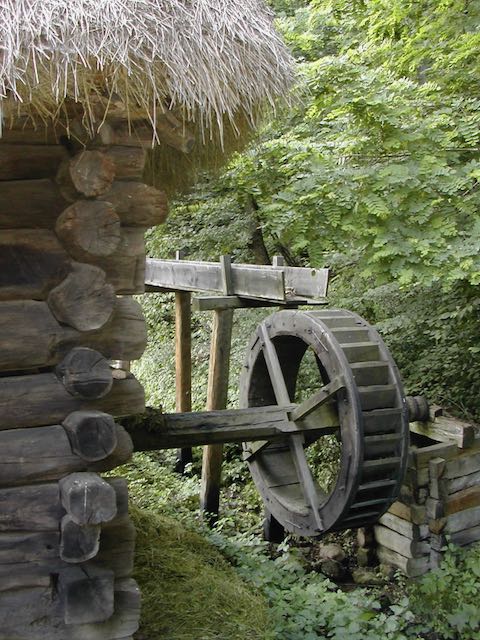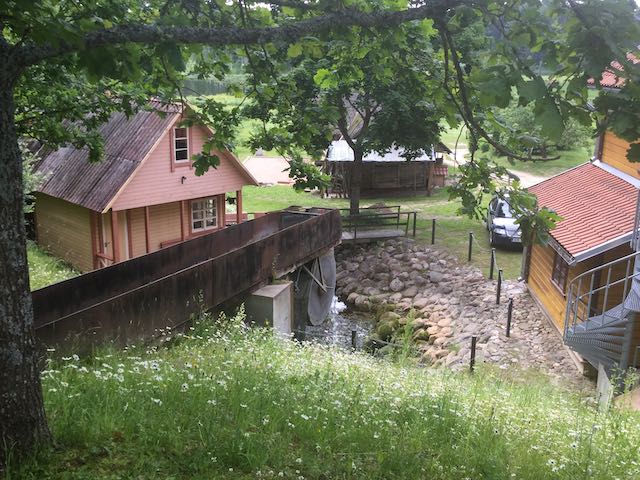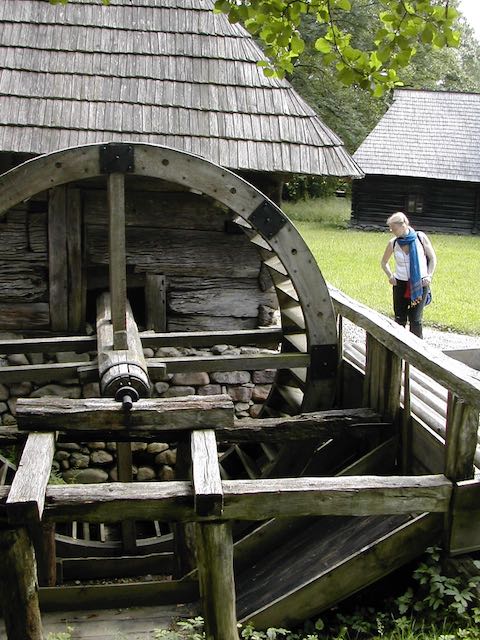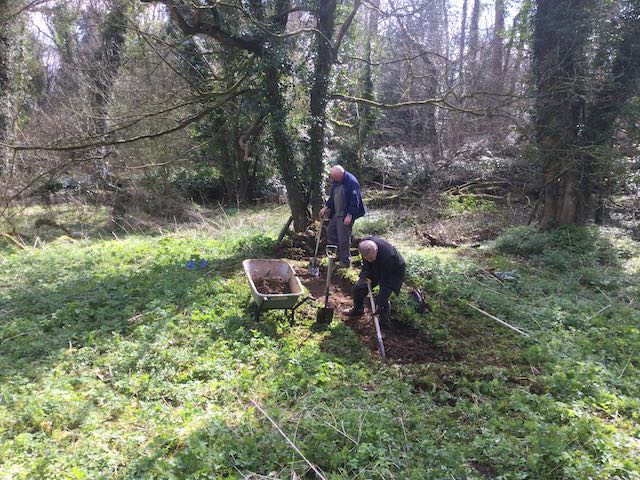
Peter and Alan get on with some fruitless labour.
Task 6. A trench left
behind by OCC footpath improvers was tidied up and a quite
well built but low wall examined. Beyond that was an iron
fence, a gravel path and a rough stone revetment to the stream
bank. All of it probably twentieth century but still all part
of the garden's story. Huge thanks to Joe for helping polish
this off.
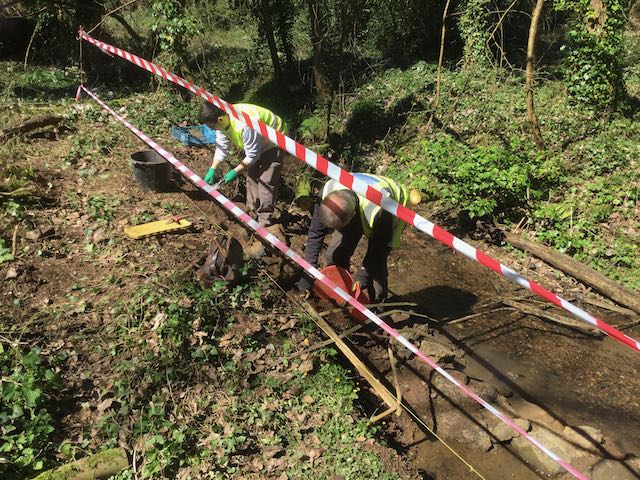
Cleaning up the stream-side revetment
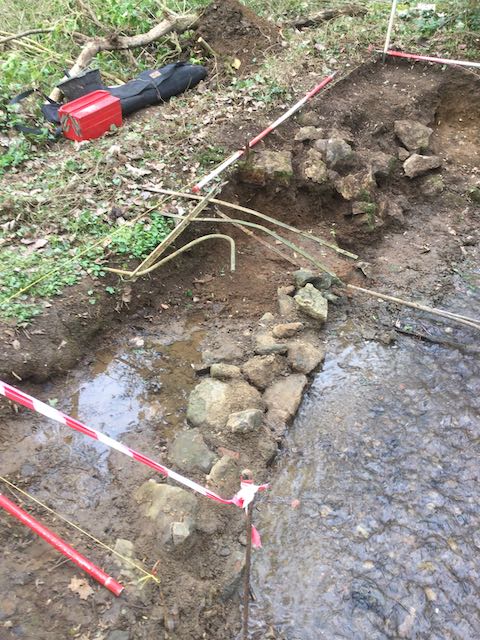
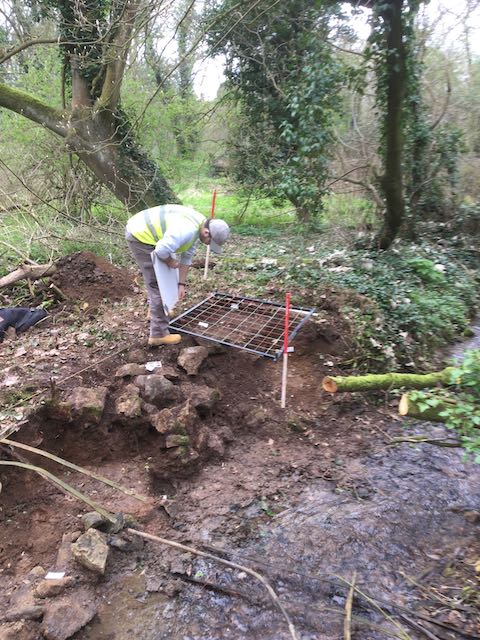
Here it all is ready for photographing and drawing.
Task 5. Yes. I know, I said
the order was a rough one. A session of archaeological weeding
on a section of walling adjacent to the public footpath, not
especially impressive but we need to record it and perhaps
investigate more.
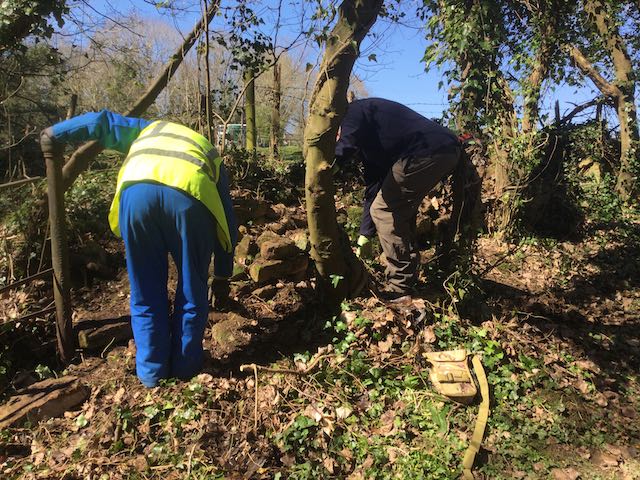
Ian and Peter pull ivy.
Task 4. A section was dug
across a possible channel associated with broken ground to the
east of the footpath on the north side of the valley and it
started to look quite interesting until the rain started... we
will return. That about wrapped it up for week one but our
attention had already shifted up towards a small valley to the
south we dubbed the Fairy Glen...
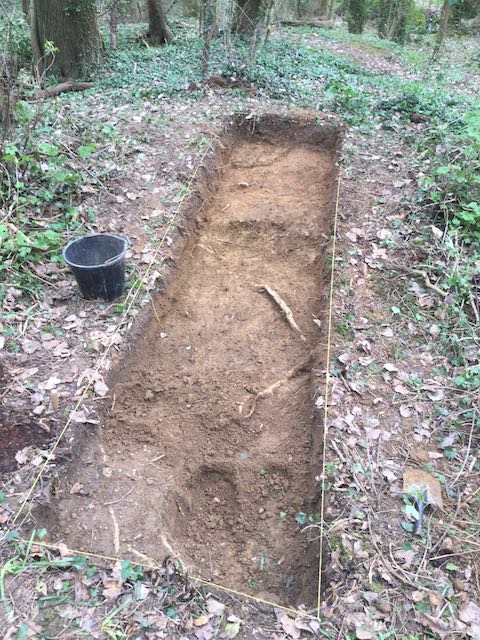
A new trench just before it poured down and turned everything
slippy.
Task 11. The cut for the
terracing plus the view to the north across much of the garden
always suggested that this was an area of some significance.
An earlier trench had revealed little except a pile of clay
but extending our excavations to the west paid dividends as we
encountered cobbles, cobbles and more cobbles of different
sizes and textures and in layers. A simple longitudinal trench
turned into an 'L' shaped trench and then to an open area
excavation of around 20 square metres. We had to continually
dodge showers and occasionally brave fierce winds but a couple
of well anchored gazebos kept us going to the end of week two.
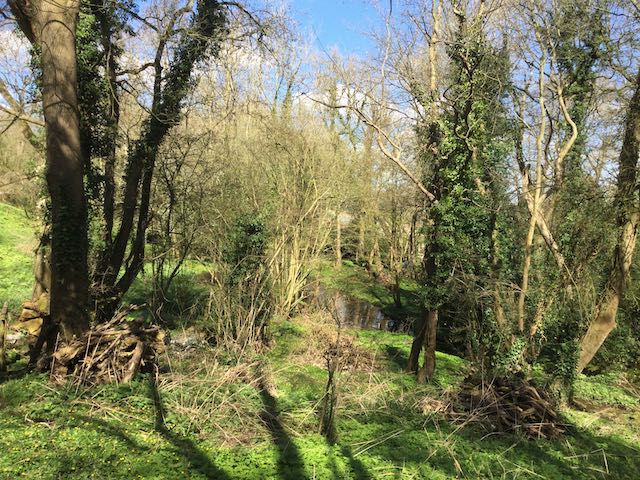
Here's the view from the terrace looking north east across to the
site of the House of Diversion.

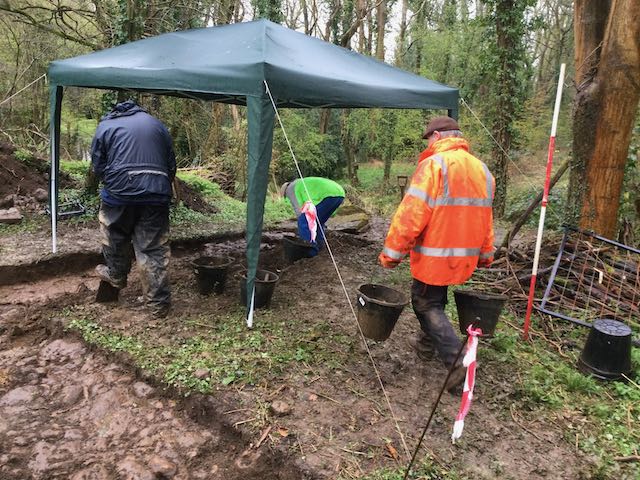
Our first trench is started and then we go round the bend and the
rain starts up again.
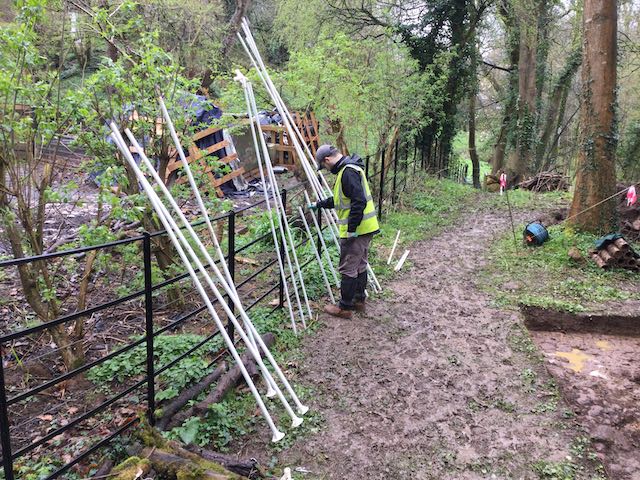
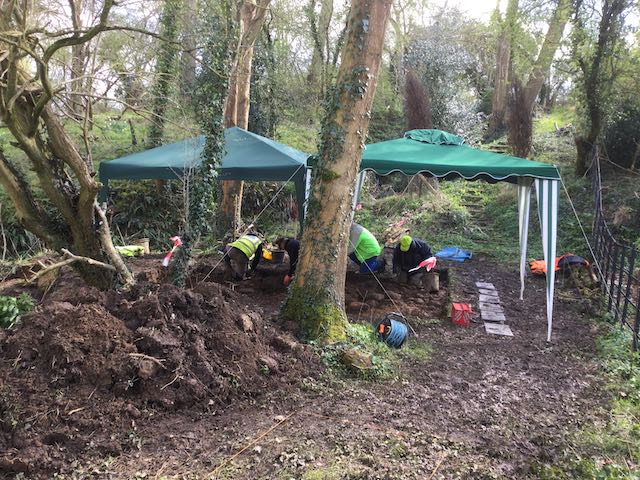
Joe bravely struggles to make sense of an old gazebo we managed to
excavate from the Piggery and soon everyone is, if not happy, at
least reasonably dry.

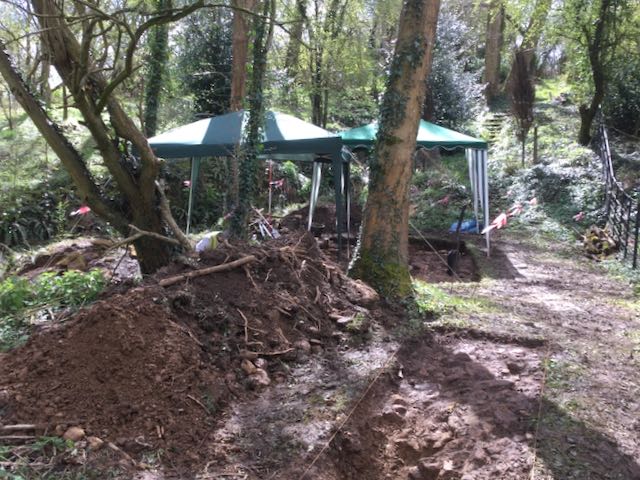
We continue expanding the area under excavation and the sun comes
out... eventually.
It's inevitable that, as
one digs, one searches for explanations as to what the
features uncovered could actually mean. What is without a
doubt is that we have unearthed substantial cobbled surfaces
that vary in their nature across the site. What is absent,
apart from a few cow bones, a couple of large iron nails and
two small pieces of tin-glazed earthenware, is anything much
in the way of diagnostic finds so, in the absence of any
better ideas, I got to thinking about Sir Anthony's famed mill
as described by Robert Plot:
At
Hanwell in the Park, there its also a Mill erected by the
ingenious Sir Anthony Cope, of wonderful contrivance,
where-with that great Virtuoso did not only grind the Corn
for his House, but with the same motion turned a very
large Engine for cutting the hardest Stone, after the
manner of Lapidaries; and another for boaring of Guns: and
there, as in the Mill at Tusmore, either severally or all
together, at pleasure.
... and then I thought about all the mills I had visited
in Estonia and Romania... hmmm...
